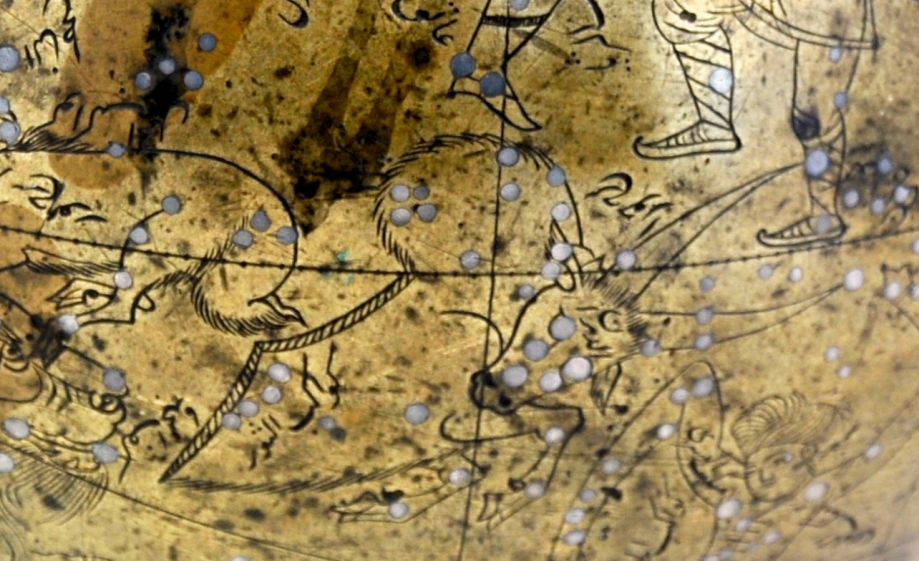
According to Aratus the Bull, ταυρος, is found crouching at the feet of the charioteer and with whom Taurus shares a star. Aratus adds that the Bull’s head is well marked by the group of stars called the Hyades. This star group was one of the ones mentioned by Homer as were the Pleiades, which are also in Taurus. The legend of Europa and the bull was commonly linked to this constellation. In the star group of the Hyades, Hesiod names only five stars: Phaisule, Koronis, Klaeia, Phaio, and Eudora, and for him their cosmical setting was a time for ploughing. Later mythographers counted seven Hyades and made them nymphs who nursed Dionysus. They were named Eudora, Ambrosia, Koronis, Pedile, Polyxo, Phyto, and Thyone. They were also said to be sisters who cried themselves to death when their brother Hyas was killed hunting. The word ὑάδες (Hyades) is according to some derived from ὑέιν (to rain), although others give an alternative derivation from ὑς (swine), since it was sometimes thought to be a sow with four young. Cicero says the word comes from hyein, for they bring rain “while our nation stupidly names them the Suckling-pigs, as though the same Hyades were derived from the word for ‘pig’ and not from ‘rain’”.
In Islamic representations only the first half of a charging bull is depicted, following Ptolemy’s description. On the Manuchihr globe the constellation is labeled kawākib al-thawr (the constellation of the Bull). The constellation consists of 32 formed stars for Taurus and 11 unformed stars, one near the western hoof of the bull (in the line of single degree graduations of the equator), two above the head of Orion whose figure is beneath the bull’s horns, and eight between the horns, extending into the line of the ecliptic.
The largest star of the five on the head is labeled al-dabarān, which is also known as ‘ayn al-thawr (the eye of the bull). It was numbered fourteenth in Taurus and is the thirteenth brightest star in the heavens [α Tauri, Aldebaran]. Al-Ṣūfī says it is a bright red large star traditionally called al-dabarān from a root meaning “to follow”, because it followed the Pleiades, adding that al-dabarān is the name of the fourth lunar mansion and is used on astrolabes; says Emilie Savage-Smith.